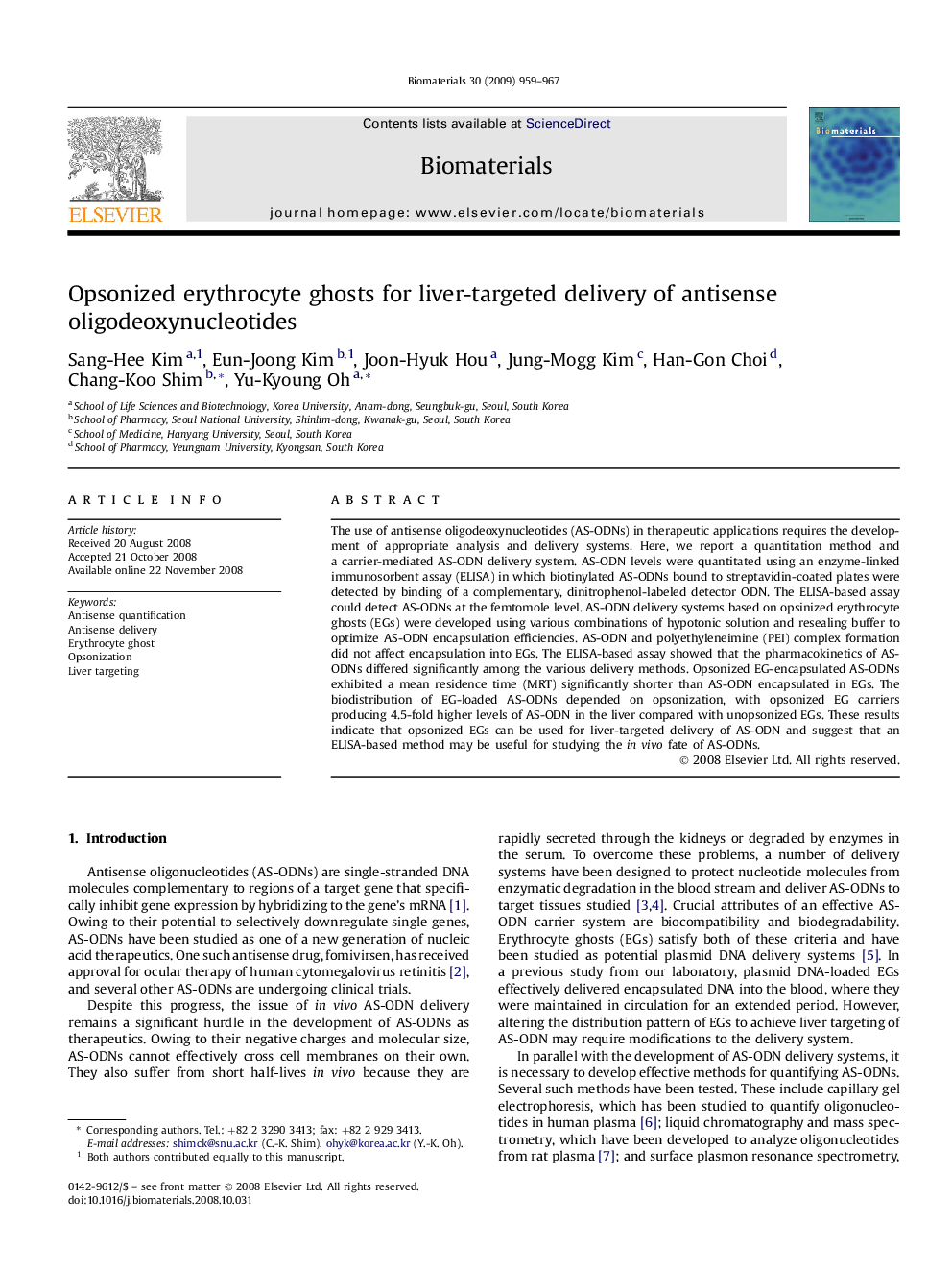| Article ID | Journal | Published Year | Pages | File Type |
|---|---|---|---|---|
| 9441 | Biomaterials | 2009 | 9 Pages |
The use of antisense oligodeoxynucleotides (AS-ODNs) in therapeutic applications requires the development of appropriate analysis and delivery systems. Here, we report a quantitation method and a carrier-mediated AS-ODN delivery system. AS-ODN levels were quantitated using an enzyme-linked immunosorbent assay (ELISA) in which biotinylated AS-ODNs bound to streptavidin-coated plates were detected by binding of a complementary, dinitrophenol-labeled detector ODN. The ELISA-based assay could detect AS-ODNs at the femtomole level. AS-ODN delivery systems based on opsinized erythrocyte ghosts (EGs) were developed using various combinations of hypotonic solution and resealing buffer to optimize AS-ODN encapsulation efficiencies. AS-ODN and polyethyleneimine (PEI) complex formation did not affect encapsulation into EGs. The ELISA-based assay showed that the pharmacokinetics of AS-ODNs differed significantly among the various delivery methods. Opsonized EG-encapsulated AS-ODNs exhibited a mean residence time (MRT) significantly shorter than AS-ODN encapsulated in EGs. The biodistribution of EG-loaded AS-ODNs depended on opsonization, with opsonized EG carriers producing 4.5-fold higher levels of AS-ODN in the liver compared with unopsonized EGs. These results indicate that opsonized EGs can be used for liver-targeted delivery of AS-ODN and suggest that an ELISA-based method may be useful for studying the in vivo fate of AS-ODNs.
